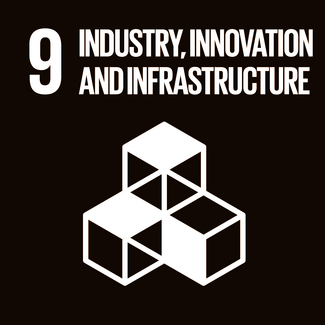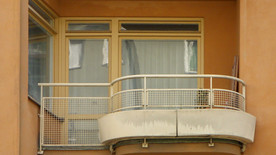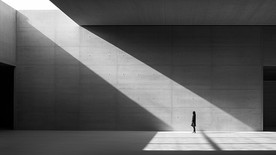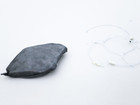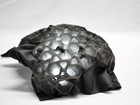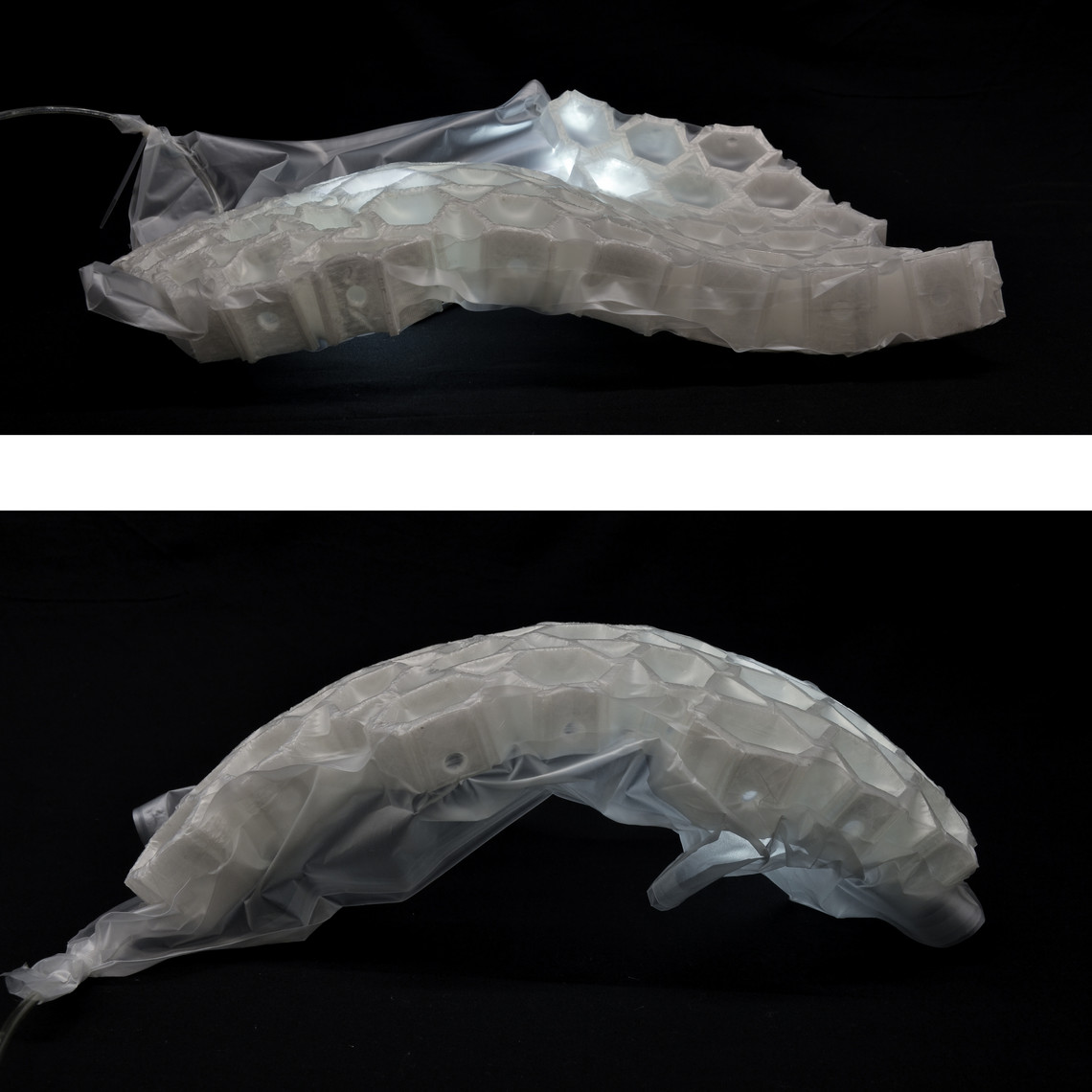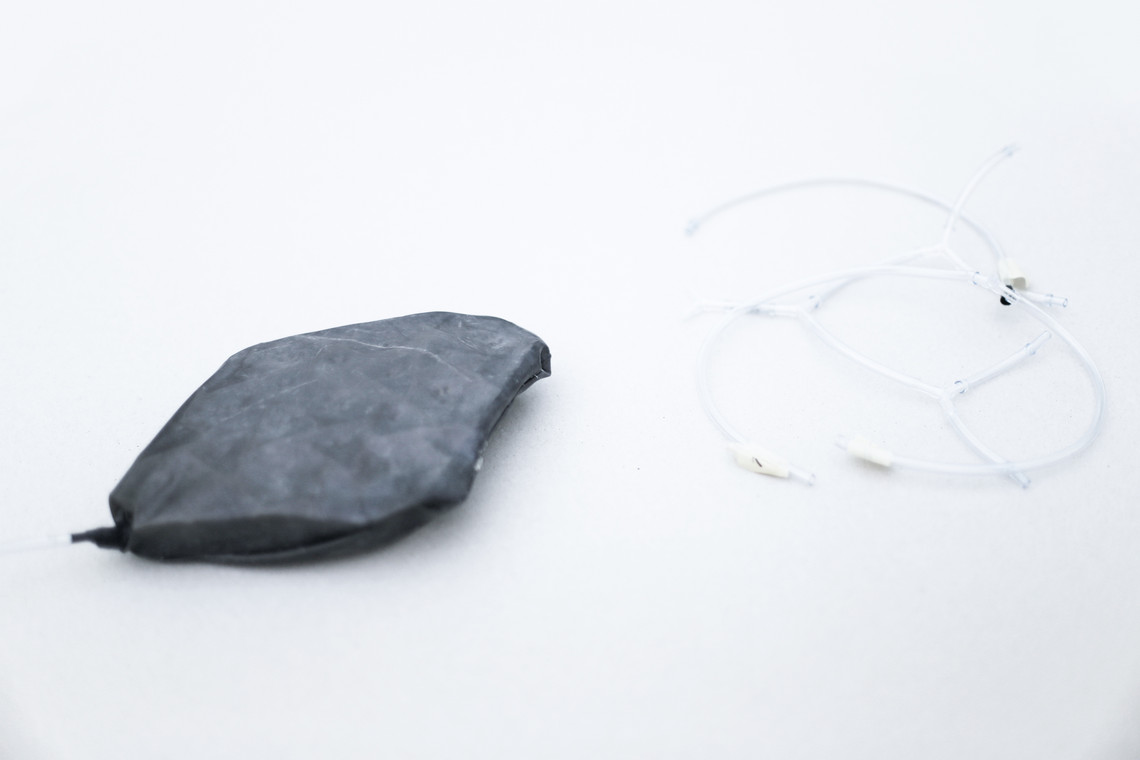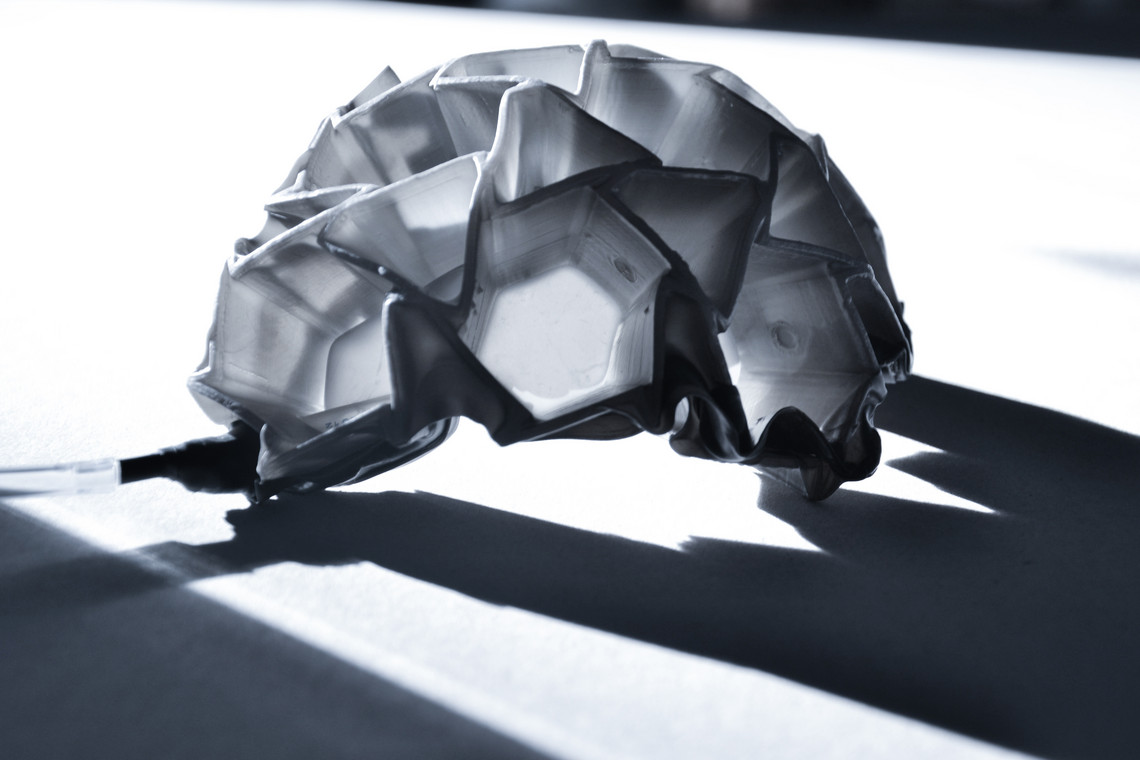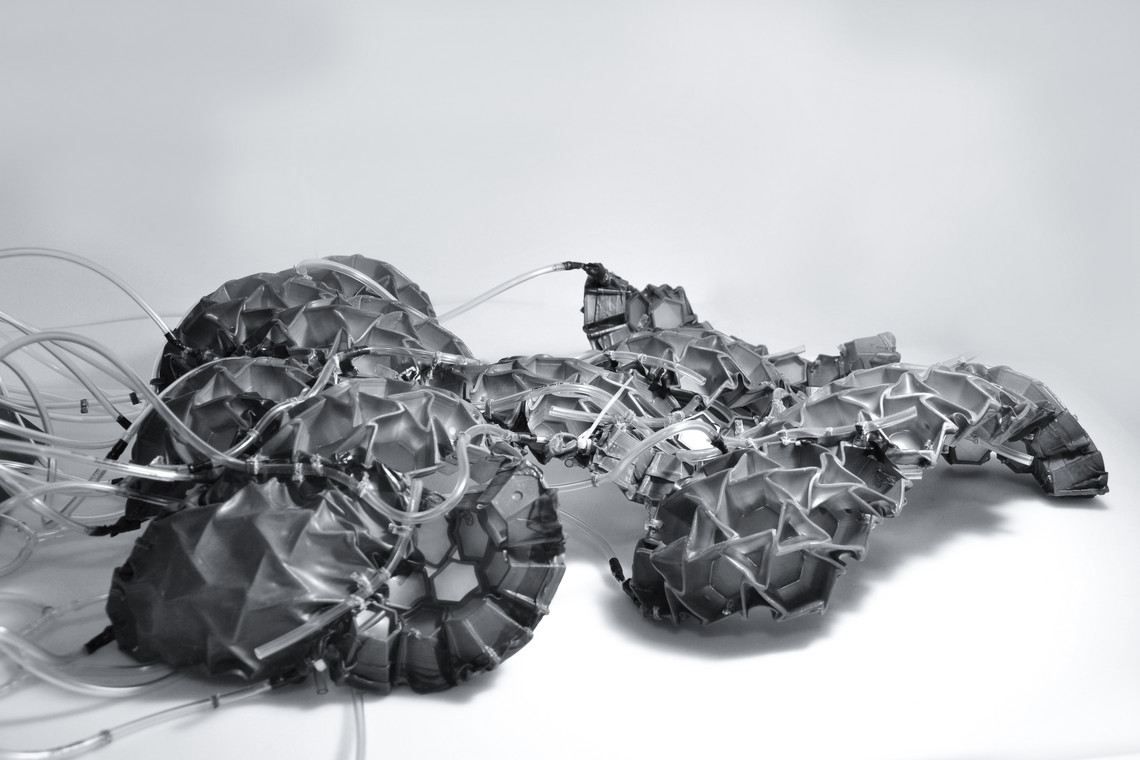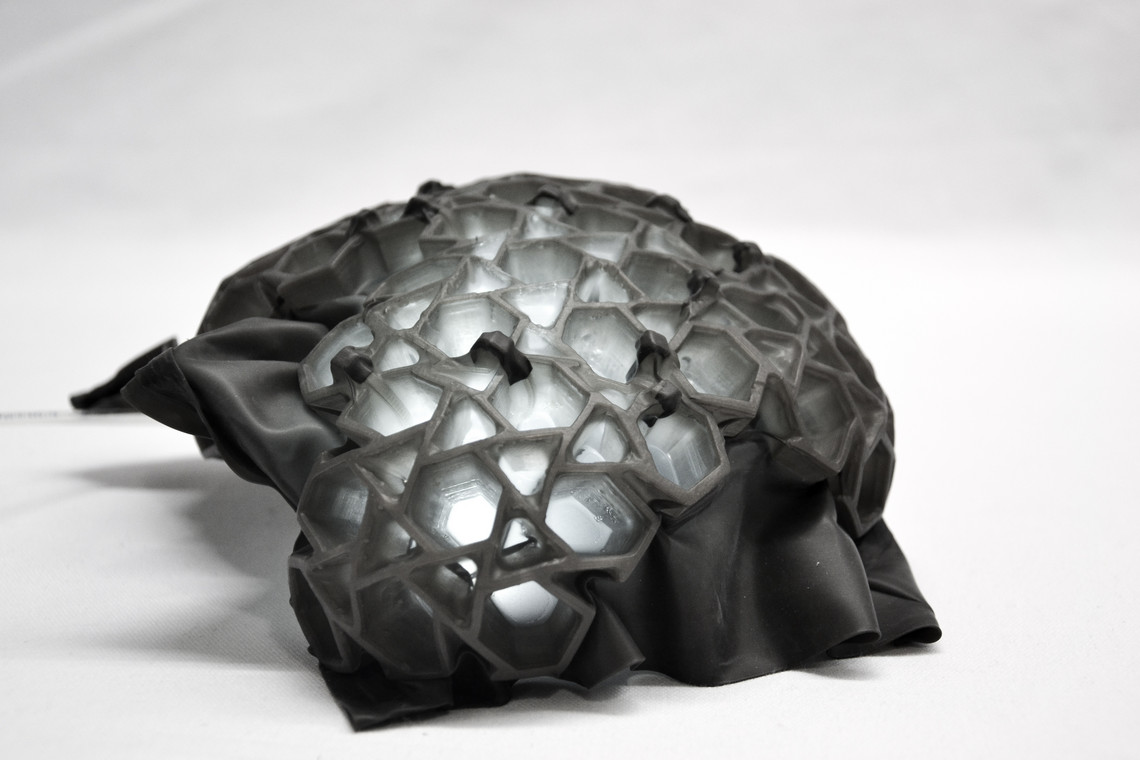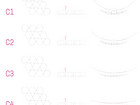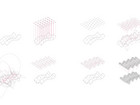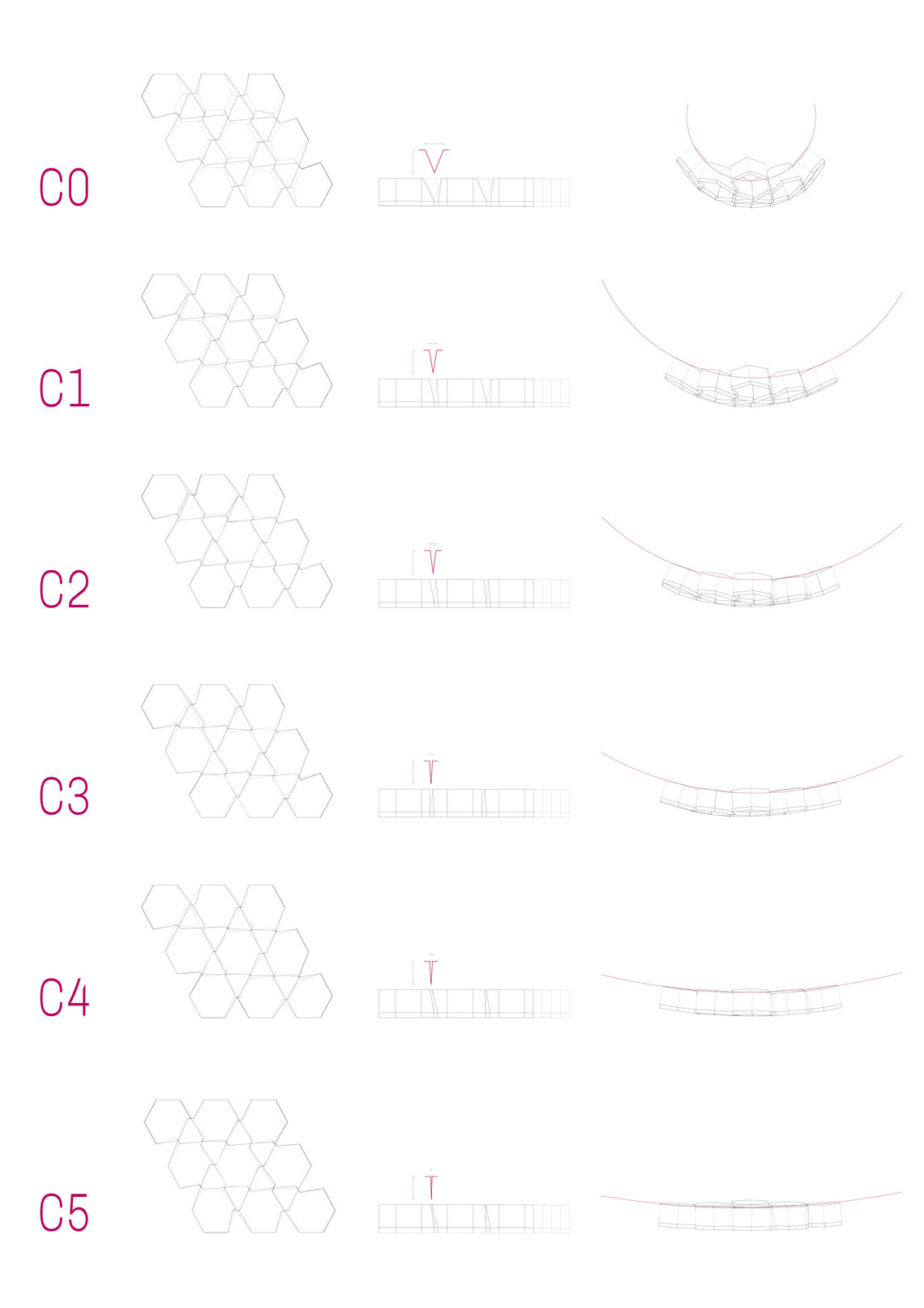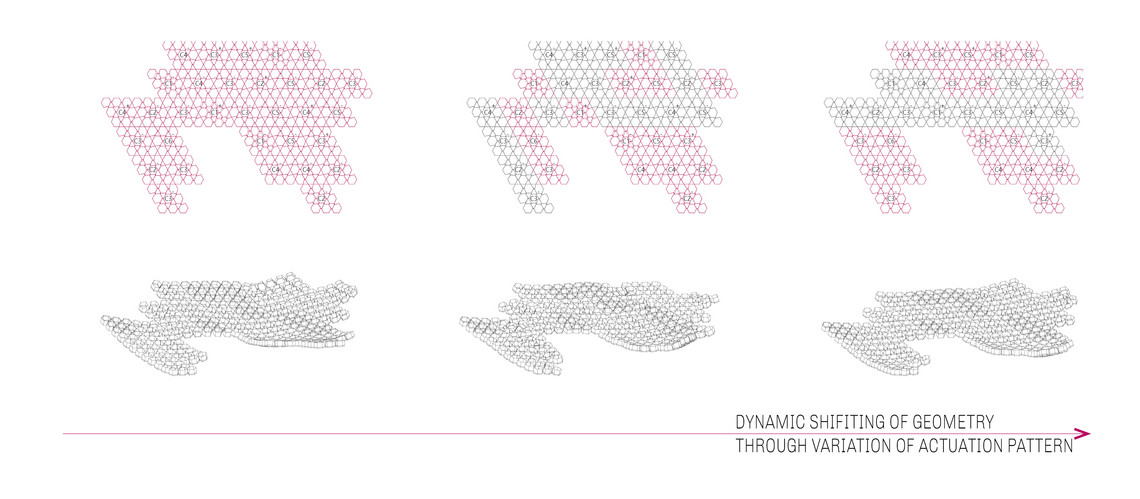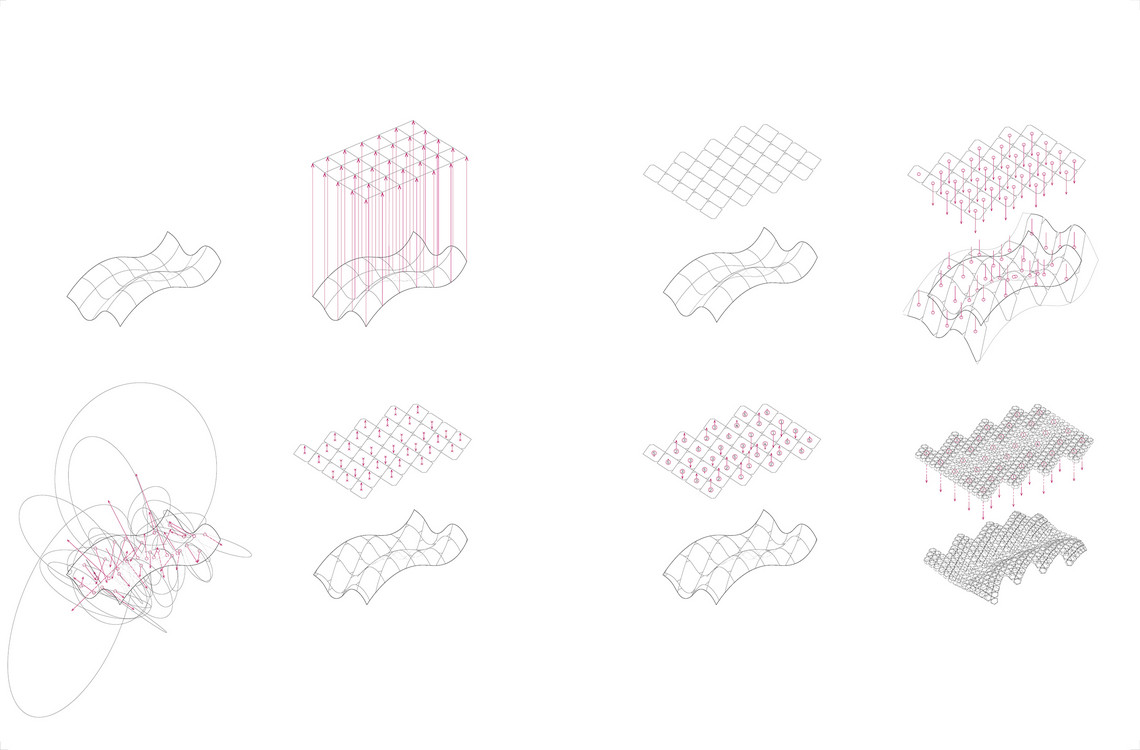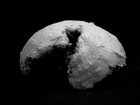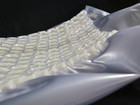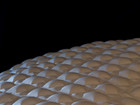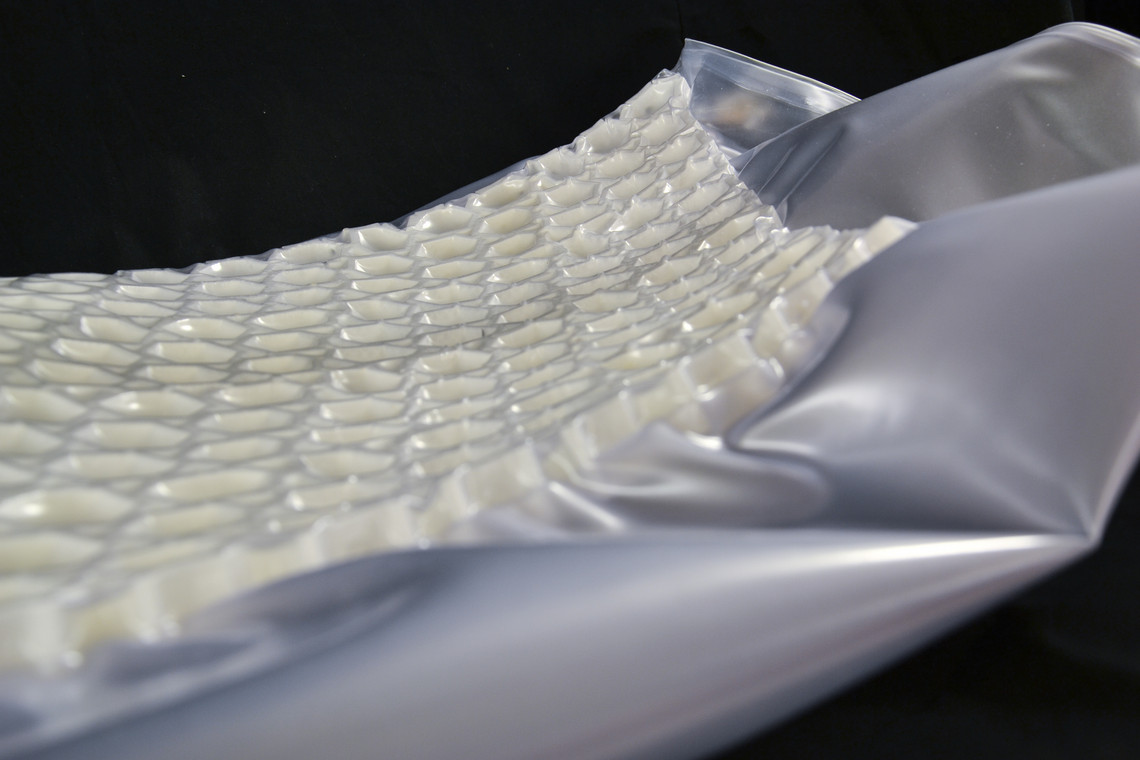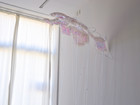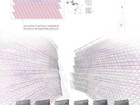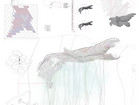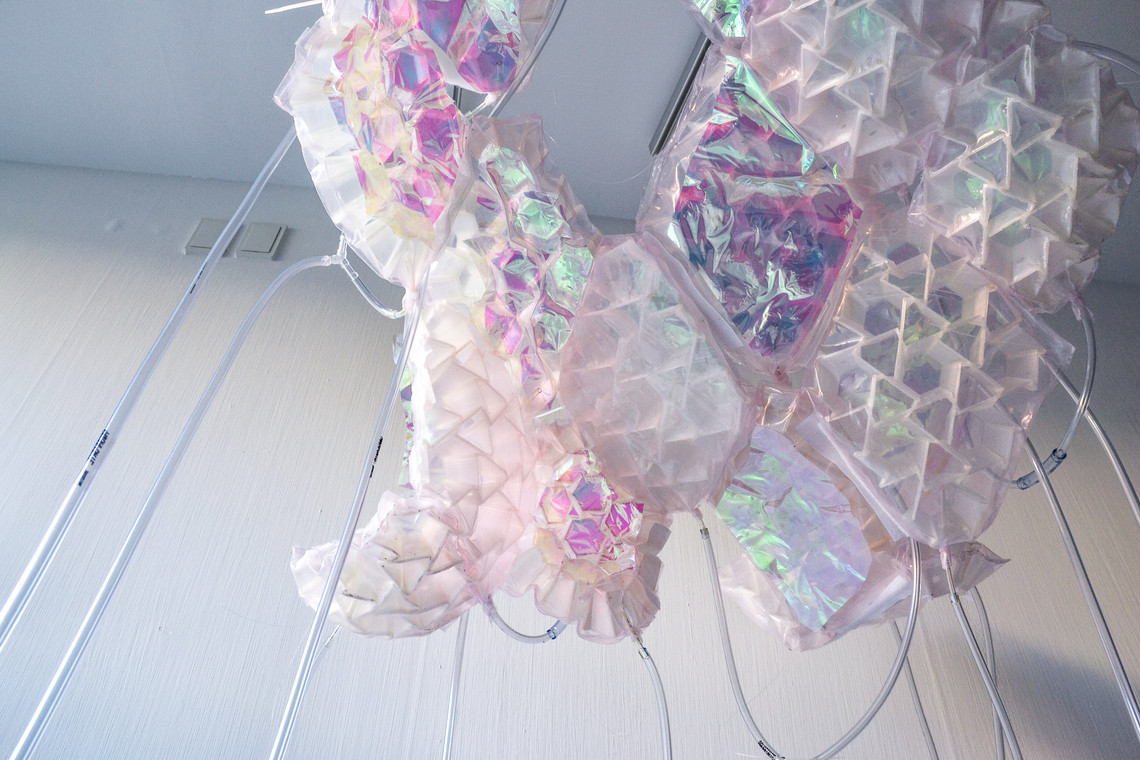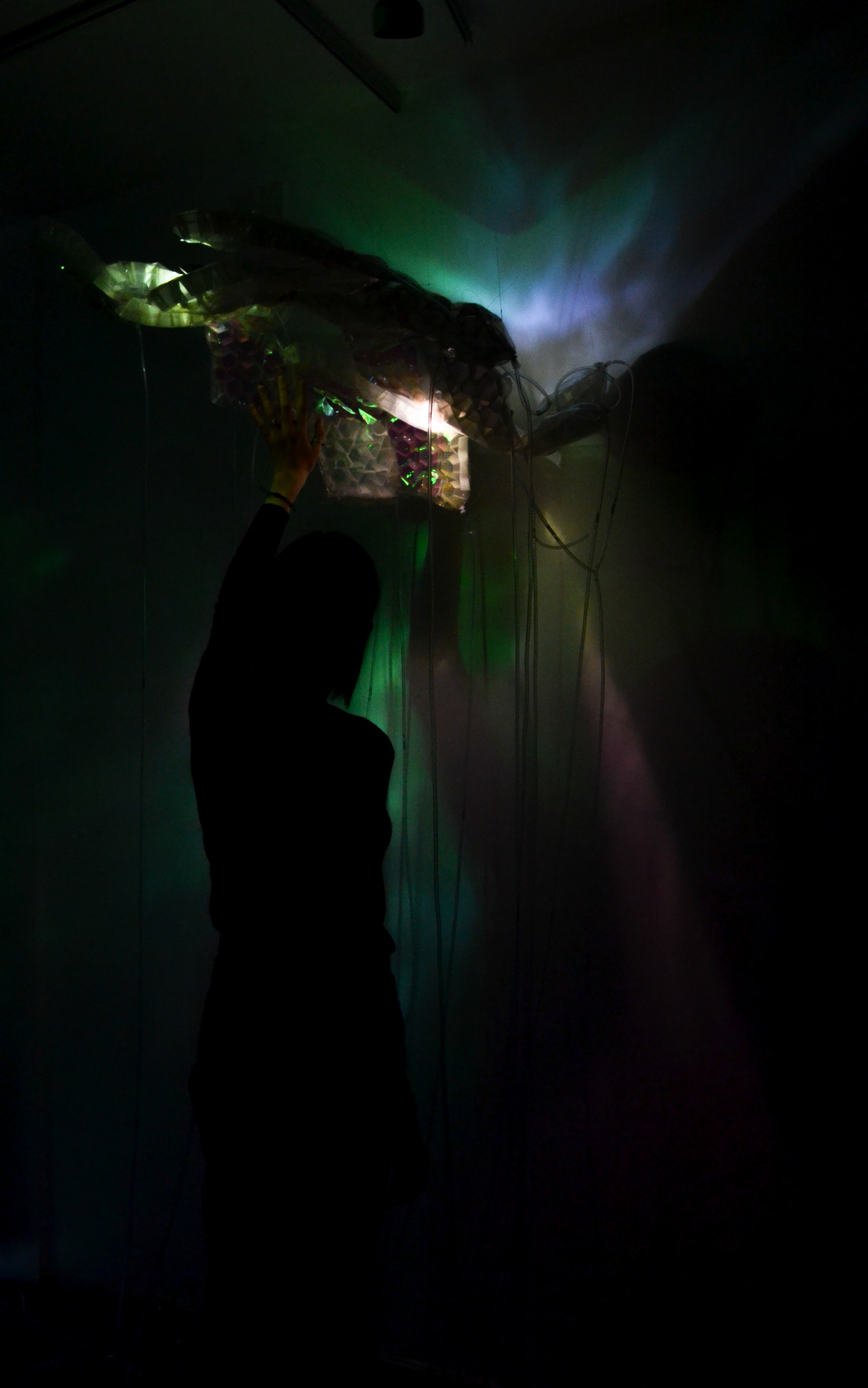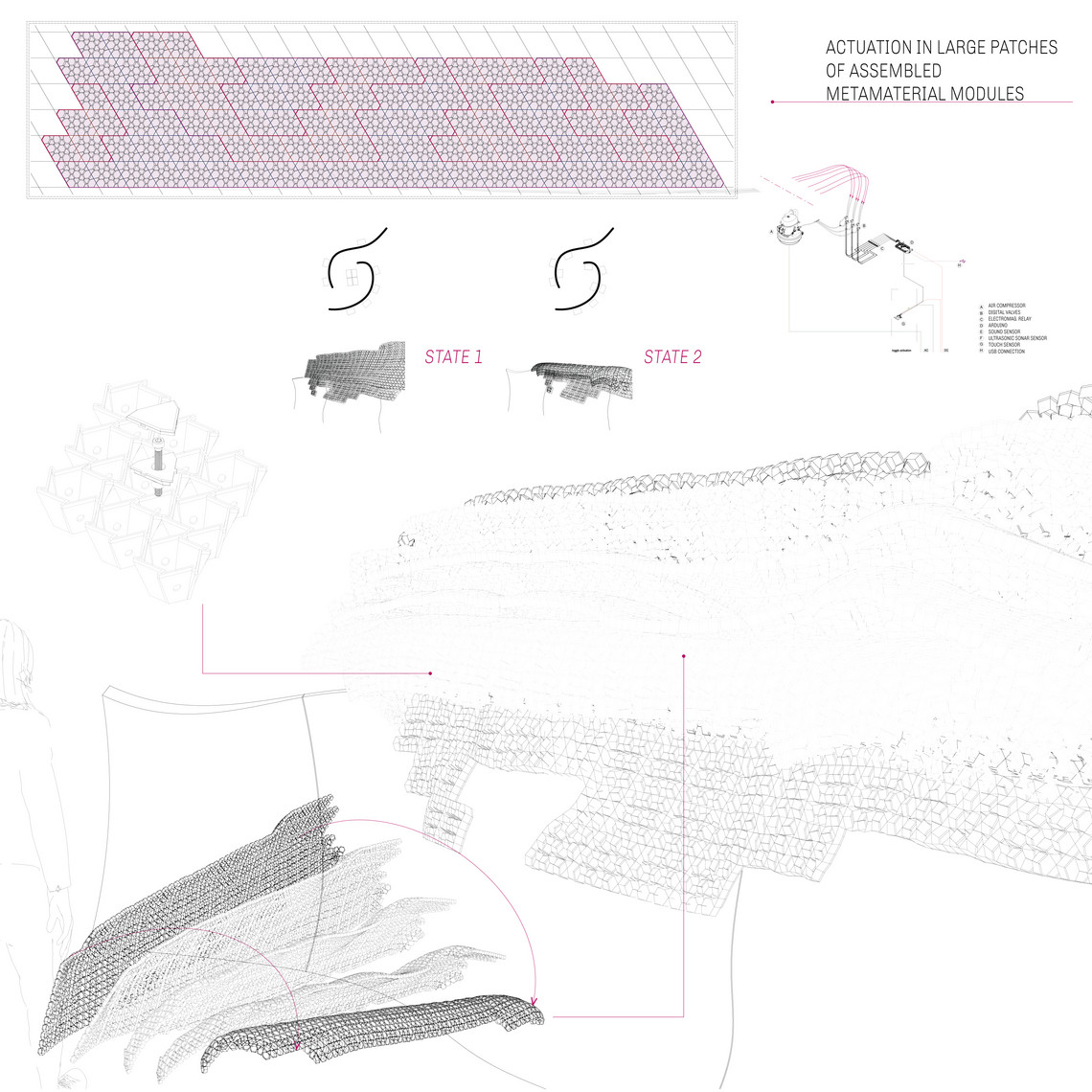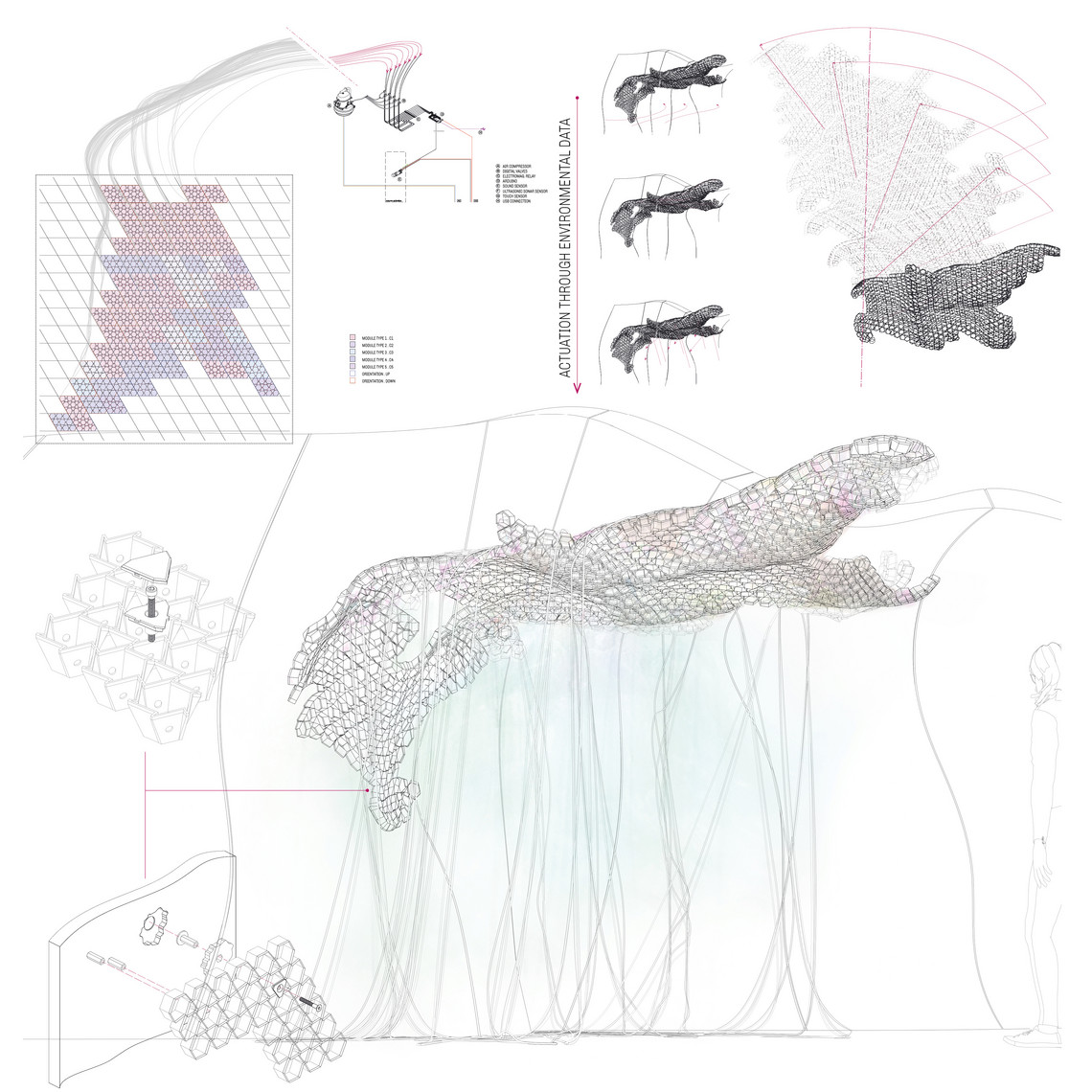
Soft Actuated Material
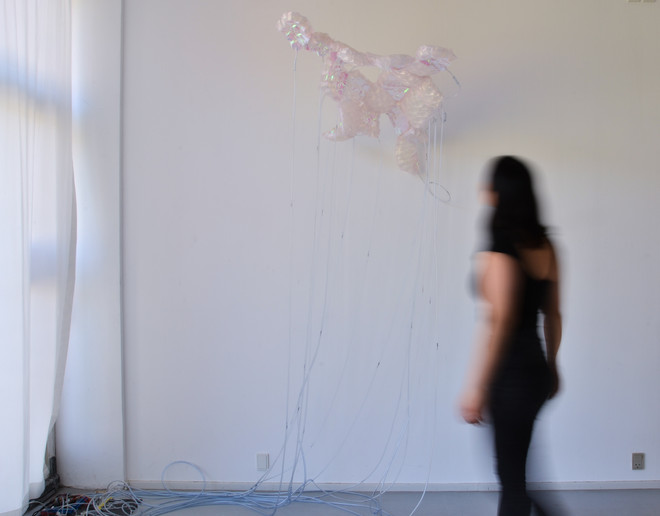
FLEXIBILITY IN ARCHITECTURE
This research explores the application of a composite, soft-actuated and programmable material as a flexible space generator throughout different phases of architecture through the development of design, fabrication and computational simulation methods. This adaptable material is a modular assembly, of which the modules leverage a programmed actuation, inspired by the field of soft robotics.
It aims to challenge the rigidness of traditional architectural systems, their inability to adapt to the users need and their associated inflexible construction and production methods.
On the one hand, this research engages with the world of dynamic architecture through the application of this material in the built environment and is interested in the question if ‘the layers of new built environements - layers of architecture, sculpture, and fashion - [can] come alive?’ Beesley, 2019 The exploration of this material as flexible space generator investigates the vision of spaces, which are in continuous change, wether deformed passively through the environment, or through active interaction by the occupant of the space. Through these studies, it tries to identify the architectural qualitites, given by such spaces.
On the other hand, it tries to offer a novel method for flexible molds in the production of complex concrete panels. In 2017, construction industry has been responsible for 50% of the globally produced solid waste. (Thomas and Costa, 2017) The majority of doubly-curved concrete surfaces are casted using custom-tailored formwork, created through subtractive fabrication methods, made of wood or foam, which can only be used for the casting of this one specific shape. This does not only result in excessive waste production and material consumption, but also leads to high construction costs. (Popescu, 2018) By developing novel adaptable methods, we could considerably contribute to the reduction of waste. This research project has developed a novel method for a controllable material, that can be reconfigured and reused to generate such an adaptable moulding method.
Most of the time, architecture is delegated by different teams and split into different phases, using different tools and materials. We inhabit a product, but what if the tool becomes the dynamic environment we occupy? What if we start designing a building within the restrictions given by a material, what would this architecture look like and how would it influence our way of planning and developing when architectural phases would be more strictly linked to each other?
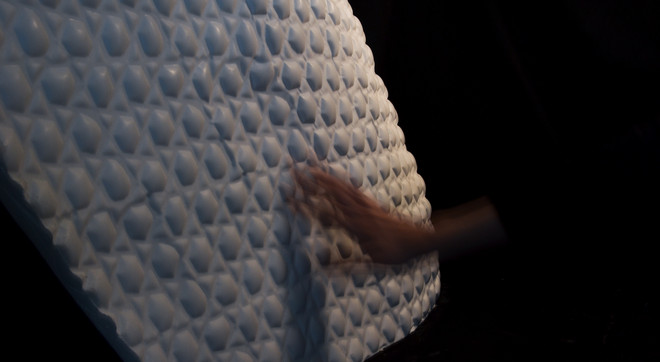
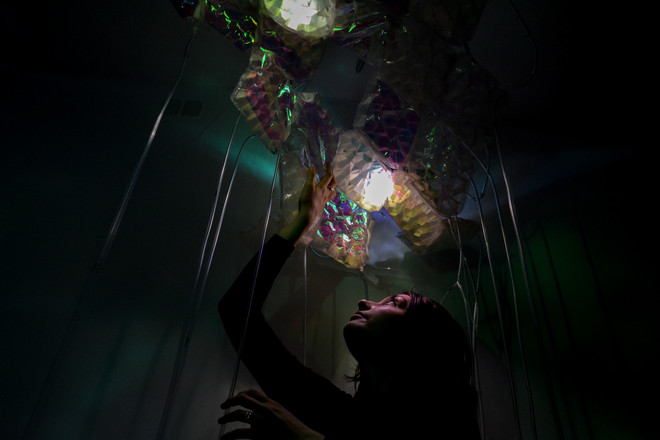
DESIGNING WITH THE MATERIAL
In order to design with this material, we need to be able to control it. Through several simualtion processes, a calibrated method has been developed, which enables to digitally design with the material and to extract the necessary parameters to construct the physical according shape.
FLEXIBLE PRODUCTION OF ARCHITECTURAL ELEMENTS
Being able to control the material allows to design with it. Within this research project, it has been implemented as a flexible and adaptable mould for complex concrete elements. This novel method inspired by soft robots, could allow the reduction of material consumption, time intensity of the construction and the linked costs of construction industry. The method proposes a reusable mould, which through its programmability can be reconfigured into different shapes within the design-space of the modular library.
This formwork system has been tested in collaboration with BBFiberbeton. Several Glass Fiber Reinforced Concrete panels have been produced and the mould has been in continuous development throughout this process.
FLEXIBILITY IN ARCHITECTURAL ENVIRONMENTS
This project has questioned the rigid construction method of architecture, but at the same time it wants to question the rigidity of architectural spaces themselves. The development of this flexible material could allow the creation of soft spaces, which could be in continuous change of shape and create a passive or active interaction with the human occupier of the room. This project has investigated the material and spatial qualities, such a breathing and shape shifting architectural elements could provide and what influence it would have on the occupier of architecture.
Det Kongelige Akademi understøtter FN’s verdensmål
Siden 2017 har Det Kongelige Akademi arbejdet med FN’s verdensmål. Det afspejler sig i forskning, undervisning og afgangsprojekter. Dette projekt har forholdt sig til følgende FN-mål